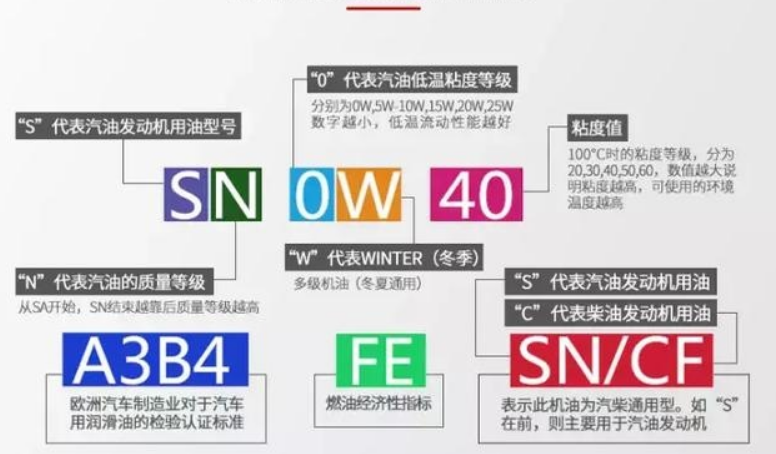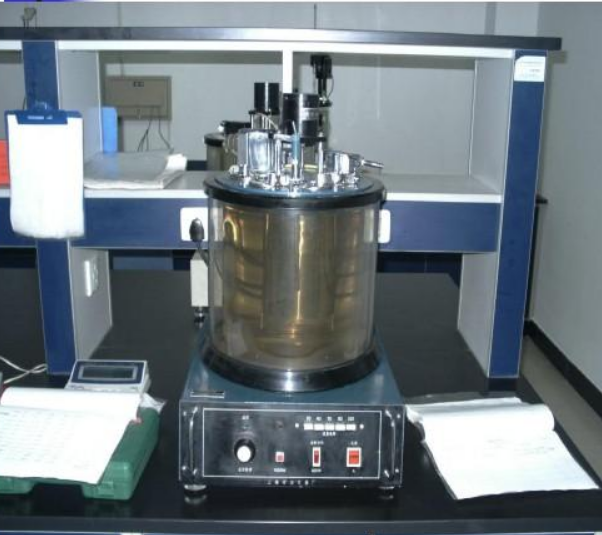[Zero·Classroom] Detailed explanation of various standard index data of automobile lubricants
- Categories:News Spotlight
- Time of issue:2021-06-28 17:01
[Zero·Classroom] Detailed explanation of various standard index data of automobile lubricants
- Categories:News Spotlight
- Time of issue:2021-06-28 17:01

API (American Petroleum Institute)
1. The series beginning with "S" represent gasoline engine oil, and the specifications are: APISA, SB, SC, SD, SE, SF, SG, SH, SJ, SL, SM, SN.
2. The series starting with "C" represents diesel engine oil, the specifications are: API CA, CB, CC, CD, CE, CF, CF-2, CF-4, CG-4, CH4,
CI-4.
3. When the two letters "S" and "C" are present at the same time, it means that the engine oil is universal for gasoline and diesel. (Note: S stands for gasoline engine oil, C stands for diesel engine oil.)
The meaning of the letter after S or C is: from "SA" to "SN", each increment of a letter, the environmental protection level of the engine oil will be better than the previous one, the lower the letter, the higher the environmental protection level, among international brands Most of the engine oil grades are above SF grade, and currently the highest environmental grade engine oil is "SN" grade.

ACEA
In order to meet the hardware requirements of modern engines, such as turbocharged direct injection engines, anti-LSPI (low-speed pre-ignition) and guarantee wear protection and turbocharger deposit control, ACEA-2021 has introduced two new categories : A7/B7-21 with high SAPS and C6-21 with low SAPS.

①A/B series with high ash content
The A/B series is upgraded to a new standard A7/B7 on the basis of A5/B5. A7/B7 are high-performance products with higher fuel economy, and have more and updated bench test requirements, and are high-performance products with high ash content.
At the same time, A1/B1 and A3/B3 are removed from the new European standard. This means that the A/B series will only have three standards in the future, A3/B4, A5/B5, and A7/B7.
②C series with medium and low ash content
The existing series of standards altogether have C1-C5, 5 standards. Among them, C5 is the best, and C2 has better fuel economy than C3 and C4.
The newly upgraded ACEA-2021 standard removes C1 and adds C6. After the adjustment of the C series, performance is the first priority for C3, and the viscosity is higher, while for C5 and C6, fuel economy is important, and the viscosity is lower.
Flash point
The flash point is the temperature of the fuel when the fuel is heated in a container with a specified structure to volatilize combustible gas and mix with the air near the liquid surface, and reach a certain concentration, which can be ignited by sparks. Flash point is a safety index for the storage, transportation and use of flammable liquids, as well as a volatility index for flammable liquids. Flammable liquid with low flash point, high volatility, easy to catch fire, and poor safety.

Pour point and freezing point
The freezing point of lubricating oil refers to the highest temperature at which the test oil is cooled to stop moving under specified conditions. It is called the freezing point and is represented by C. The freezing point is an index to evaluate the low-temperature performance of oil products. The higher the freezing point of the lubricating oil, the worse its low temperature fluidity, and vice versa.
The pour point of lubricating oil refers to the lowest temperature at which the cooled test oil can flow in the process of temperature increase under specified conditions, expressed in C. Pour point is an index to evaluate the low-temperature performance of oil products. The higher the pour point of the lubricating oil, the worse its low-temperature fluidity, and vice versa.

Kinematic viscosity (the value is within a certain range, there is no bigger or smaller, the better)
Kinematic viscosity is the viscosity of the oil at 100C. The higher the value, the higher the viscosity. But engine oil plays a role of lubrication, so its smooth flow is necessary, that is, it should not be too viscous; on the contrary, if the oil flows too smoothly, it will not work, and it will not provide lubrication if it is as thin as water. . Therefore, the kinematic viscosity of the oil is qualified within a certain range, that is to say, it is just right.

High temperature and high shear viscosity (the larger the value, the better)
That is, the viscosity of lubricating oil under engine operating conditions (150°C, shear rate 10%). The study found that only when the HTHS viscosity is higher than 2.4/mPa·s can the wear be effectively reduced.

Total base number
The total base number TBN (Total Base Number) is one of the key characteristic indicators of engine oil. The total base number represents the ability of engine oil to neutralize acidic substances.
Automobile fuels, gasoline and diesel, are sulfur-containing; after sulfur-containing gasoline and diesel are burned, acidic substances will remain in the engine, which will cause acid corrosion to the engine. The alkali in the engine oil can neutralize the acidic substances produced after the combustion of gasoline and diesel, thereby avoiding the corrosion of the engine by the acidic substances, protecting the engine and ensuring the normal operation of the engine.
The total alkali number is the characteristic value of the content of alkaline substances in the engine oil. The total alkali number directly represents the corrosion and protection of the engine oil and fuel!
In the process of engine oil use, the new oil has the highest total alkali number, decreases with the use process, and the lowest total alkali number when the waste oil is discharged; when the total alkali number reaches the lower limit of the threshold, it means that the engine oil has lost its ability to neutralize acidic substances. It has already failed. If you continue to use the failed oil at this time, the engine will inevitably be corroded by acidic substances!
Therefore, the total base number TBN is a direct decisive factor in determining the oil change interval. Once the total base number drops to the lower limit of the threshold, the engine oil has failed. Even if the base oil and other additives are in normal conditions, the oil must be changed immediately. The quality of oil in China is not high, and the sulfur content in gasoline and diesel is high. The ability of engine oil to neutralize acidic substances represented by the total base number TBN is even more important.


official Weibo

Official WeChat

Official Douyin

Company address:
No. 1, Lanxiang Road, Industrial Park, Tianqiao District, Jinan City
Jinan New Material Industrial Park, Tianqiao District, Jinan City
No. 23988, Panwang Road, Zhangqiu District, Jinan City, Shandong Province
Service Hotline: 400-618-6016
Fax number: +8653185707670
Company website: http://www.jnlgl.com
版权信息
© 2021 ZERO MILEAGE LUBRICANT All Rights Reserved 鲁ICP备07007906号-1 Powered by www.300.cn


